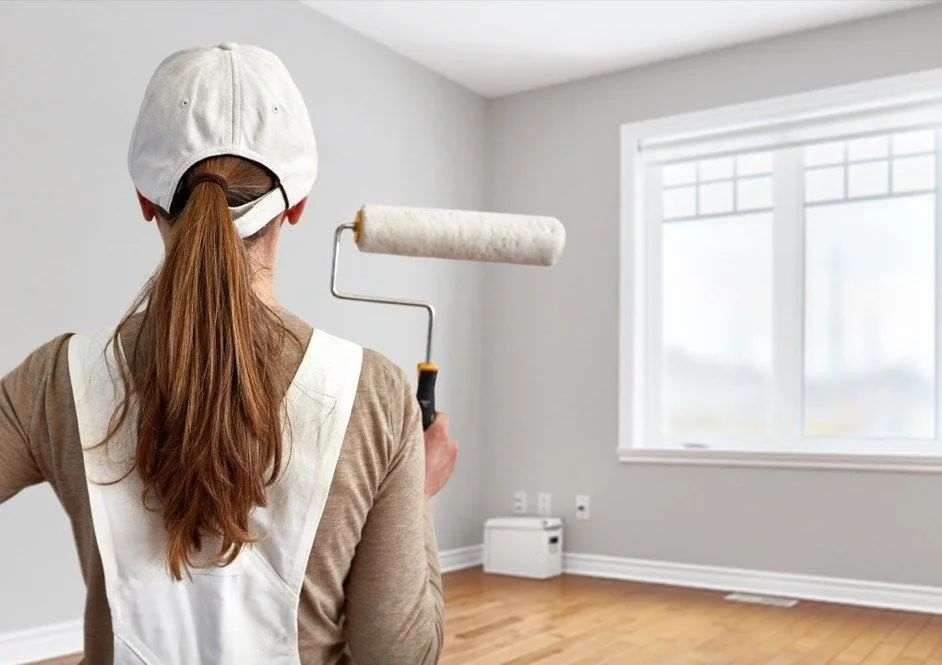Welcome to the ultimate how-to guide for expert house painting! Whether you’re undertaking a DIY project or looking to sharpen your professional skills, painters at any level can benefit from learning the tried-and-true methods to achieve a flawless finish. This blog post outlines essential techniques and tips that will help you paint your house like a pro.
We’ll explore everything from the initial preparation to the finishing touches, focusing on common challenges like choosing the right paint type and applying it effectively. By the end of this guide, you’ll have all the knowledge needed to transform your space with color and confidence.

Preparation is Key
Before diving into painting, adequate preparation is crucial. This includes both the room and the surfaces you are going to paint. Start by clearing the area or moving furniture to the center of the room and covering it with drop cloths. Don’t forget to protect flooring with paper or plastic sheets. Surface preparation involves cleaning walls, scraping off peeling paint, and patching holes or cracks. A well-prepared surface ensures that paint adheres properly and lasts longer. For professional assistance in getting these steps right, consider consulting Richmond Painters, who are experts in ensuring that every detail is meticulously handled.
The importance of a surgically clean and perfectly smooth surface cannot be overstated. Dust, oils, and previous layers of uneven paint can all undermine your new coat’s ability to adhere and look smooth. Use sandpaper or a sanding block to smooth out rough areas after patching — just make sure to wipe away all dust with a damp cloth afterwards.
Choosing the Right Paint
Selecting the correct type of paint is crucial for your painting project. For interiors, most opt for water-based paints due to their ease of use and quick drying times. Consider the room’s purpose: higher gloss levels are durable and easier to clean, making them suitable for kitchens and bathrooms, while matte finishes might be preferable for living rooms and bedrooms because of their soft appearance. When in doubt about colors or finishes, it’s worth taking home several sample pots to test out on your walls before making a decision.
Additionally, investing in quality paint can lead to better coverage, fewer coats required, and longer-lasting results. Though they may come at a higher upfront cost, premium paints usually save time and money in the long run.
Effective Techniques for Applying Paint
To get professional-looking results, mastering painting techniques is key. Always begin from the top of the room (ceilings) working your way down to avoid dripping on freshly painted surfaces. Use a high-quality brush for cutting in at edges and corners where rollers cannot reach. When using rollers for larger wall sections, apply paint in an “M” or “W” pattern without lifting the roller, filling in these forms as you go to eradicate any visible lines or streaks.
For optimal results, apply two coats of paint; however, allow ample time between coats for complete drying based on manufacturer recommendations. The second coat not only ensures durability but also helps achieve uniform color saturation throughout.
Handling Tricky Areas
Painting around windows, doors, and trim requires precision—a detail-oriented approach that makes these tasks daunting for many amateurs. To maintain sharp lines when painting edges or corners near another color or different finish, use painter’s tape. Apply tape evenly and press down firmly along its edge for tight seals that prevent bleeding. After painting over these areas, remove tape before the paint fully dries to avoid peeling off any fresh paint along with it.
In tricky spots like behind radiators or inside deep wall niches where regular rollers won’t fit, switch out larger rollers with smaller ones or use specialized brushes to reach tight spaces without compromising on coverage.
Maintaining Freshly Painted Surfaces
After putting in hard work painting your house, maintaining newly painted surfaces will ensure that walls remain pristine for as long as possible. Regular dusting or vacuuming walls lightly with a brush attachment helps reduce dust accumulation which can affect overall appearance over time. For more intense cleaning necessitated by scuffs or spills, revisit your choice of paints: if you chose high-gloss finishes, these areas can typically withstand gentle washing with mild soapy water without damaging the underlying paint job.
Taking proactive steps such as touch-up painting on noticeable chips early also prolongs time between major repainting jobs—keeping your home looking freshly painted longer.
In conclusion, achieving professional-looking results in house painting isn’t just about slapping on a coat of paint; it’s about careful planning and execution from start to finish. Given these expert tips—from thorough preparation through meticulous application techniques—you’re well-equipped to handle any painting project with aplomb and craft spaces that shine years beyond completion.
We hope this guide empowers you whether you choose to DIY or seek professional help like Richmond Painters. Happy painting!



